The level of lies and gaslighting on display attacking Liberal leader Peter Dutton’s proposal to modestly cut the permanent migration intake beggars belief.

Below is just a sample of malarkey that has come out on the topic over the past several days.
First up is long-time Big Australia whisperer and master of migration double-speak, Abul Rizvi, who claimed that Dutton’s modest migration cut would decimate the student-migration scam:
“To get to 160,000 would be unbelievably difficult and could only occur if there was a dramatic weakening of the labour market – we are talking about 7% or 8% unemployment”, Rizvi said.
“It wouldn’t just affect shonky and below-quality education providers. It would take out high-quality providers as well. It would just be shooting yourself in the foot”.
“At 160,000 you would barely have an international education sector”, he said.
Earth to Abul: Australia’s permanent migrant intake was 160,000 before the pandemic and the international education sector flourished. We also didn’t need 7% or 8% unemployment to get there.
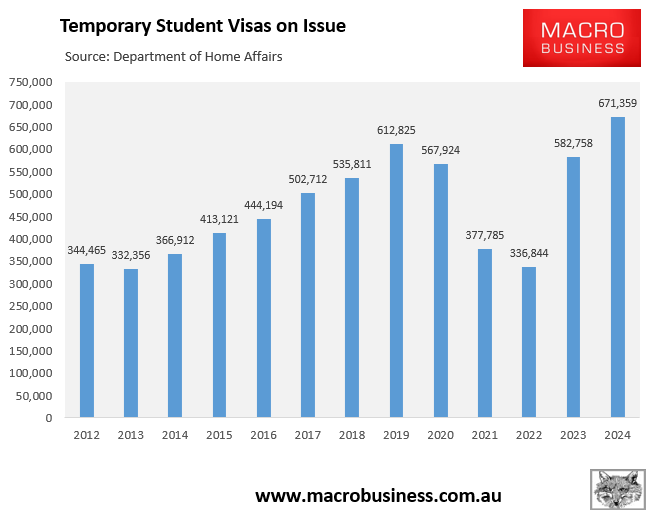
Remember also that Peter Dutton has stupidly proposed to lift the work cap for international students to 30 hours a week—50% higher than the pre-pandemic level—which will encourage more students into Australia (other things equal).
As an aside, why should anybody take Abul Rizvi’s commentary on migration seriously when he is the bloke who predicted that Australia’s annual net overseas migration wouldn’t hit 200,000 this decade?

Rizvi has also spent the past year admitting that immigration numbers are far too high and must be cut.
He has also stated that a “sustainable” net migration figure is between 150,000 and 250,000.
But because Dutton has proposed a two year cut to the permanent migration intake to 140,000, of which you must also add Dutton’s proposed humanitarian intake of 13,000 (total circa 153,000), suddenly the sky will fall.
Vicki Thomson, chief executive of the Group of Eight universities, spun a similar web of lies:
“At best, the message is ‘you are not welcome here’, at worst, it is trading off our great history of multiculturalism to play into a political narrative”, Thomson said.
“To suggest that international students are somehow responsible for the economic challenges that our community faces, such as housing, and then to imply that cutting those numbers will somehow benefit the nation, shows an unfortunate lack of understanding for just how important this export sector is to our economy”.
“We wouldn’t do this to the iron ore sector, nor to the wine industry or other critical exports. It seems very short-sighted and misguided to target our most successful services export sector”, she said.
The notion that international education is one of Australia’s great export industries has been debunked already.
Most foreign students come to Australia with little savings from their own countries. They then work in Australia to pay their living costs and tuition. Many also send funds back home to their families.
Money earned and paid in Australia by foreign students is not an export, although the ABS incorrectly classifies it as such.
Moreover, the comparison with other genuine export industries is asinine. Those industries don’t bring hundreds of thousands of people into Australia each year to compete for local homes, infrastructure, and jobs.
International education is really a people-importing immigration industry, not a genuine export industry.
Angela Lehmann, head of research for The Lygon Group, a consultancy that specialises in international education, argued that foreign students were not contributing to the rental crisis:
“It’s not like international students are arriving in Australia and being handed keys to an apartment”, Lehmann said.
“They’re struggling to get rentals because they often do not have a rental or a financial history in Australia”.
The Australian Housing and Research Institute’s (AHURI) managing director Michael Fotheringham also argued that the laws of demand and supply do not apply to the housing market:
“The impact of [Dutton’s immigration cuts] will be extremely marginal and hard to detect … I would not expect it to have a significant impact”, he told AAP.
“The housing market has 11 million properties, and whether you’ve got 160,000 or 460,000 migrants, many of whom live in other households and with people who are also migrants, it has a comparatively tiny effect”.
Tiny effect, hey Michael?

Try telling that to Australian renters, who are being pushed into deep financial stress, group housing, and homelessness:
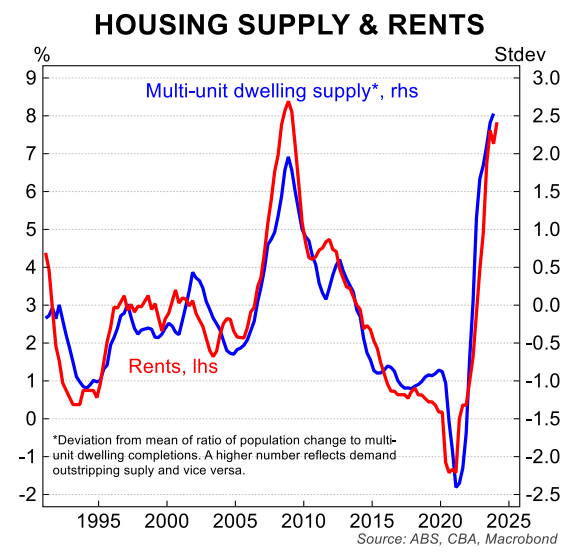
The ANU’s Liz Allen was so desperate that she even quoted the vested interest Propertyology to argue against the notion that record immigration has driven up housing costs:
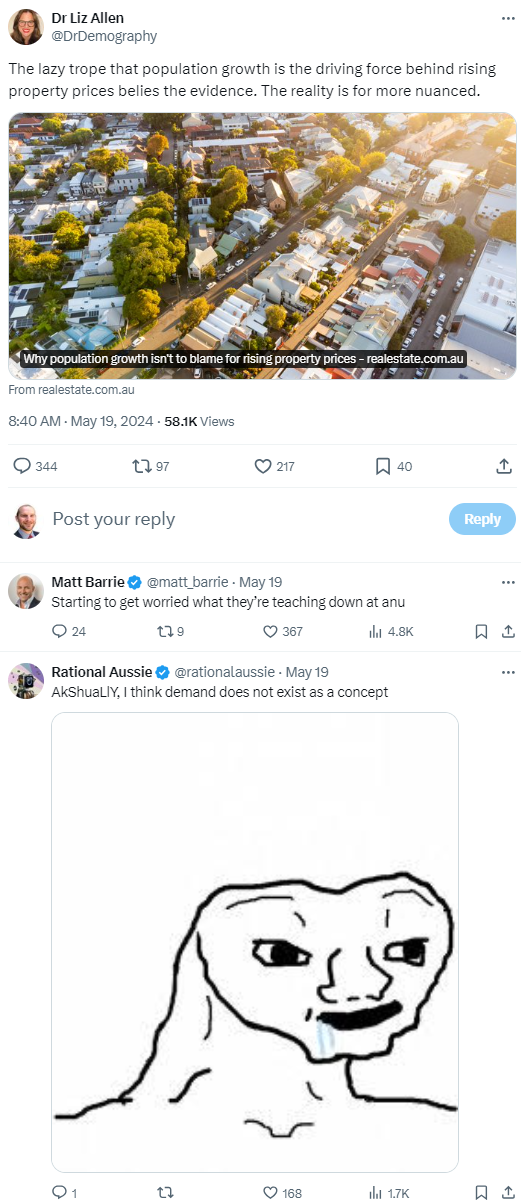
Next up, The AFR’s deputy news editor, Jessica Gardner, argued that cutting immigration would worsen skills shortages across the economy:
“916 occupations that the job agency [Jobs and Skills Australia] monitors for signs of labour market stress, 332 roles are in shortage. That’s 36%, or more than one in three, occupations in Australia for which businesses can’t find the workers they need”.
“So it’s great Dutton has the worker shortage in construction in mind, but he seems uninterested in the crisis facing health, aged care, cybersecurity, hospitality and engineering, to name just a few sectors also screaming out for more talent”…
“In Dutton’s populist pitch to bring down house prices, there is no mention of the role of migration in filling these crucial roles”.
“In focusing on migrants as a problem for Australia, rather than an opportunity, Dutton has taken the low road. And actually the most disappointing thing is it might work. And what would that say about us?”
The notion that high levels of immigration are needed to solve skills shortages has been debunked by the last two decades of empirical evidence.
Australia’s population has grown by a whopping 8.2 million people this century, yet skills shortages are worse than ever.
The problem is that we have run a disjointed ‘whack a mole’ migration system whereby we try to plug skills gaps in one area only to create shortages in others.
Most so-called ‘skilled migrants’ also work in low skilled jobs.
For example, the Migration Review showed that 51% of international university graduates with bachelor’s degrees were working in unskilled jobs three years after graduation:
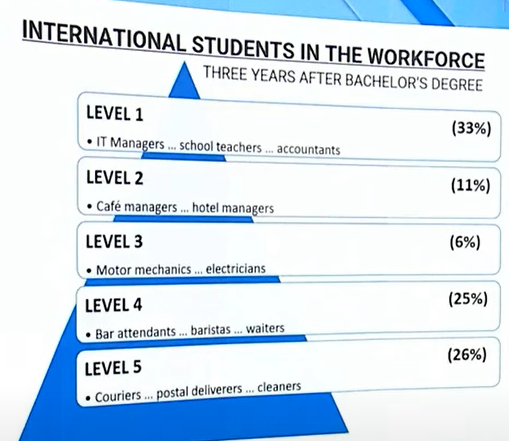
Source: Migration Review (2023)
International student graduates earn significantly less than local born graduates and have worse labour market outcomes:
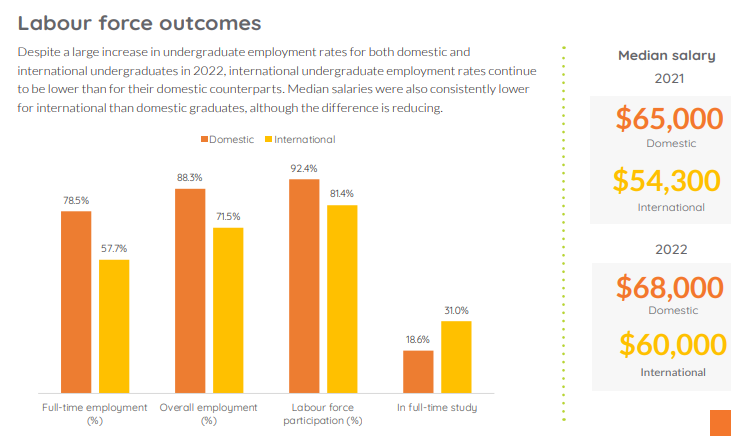
Source: Graduate Outcomes Survey
‘Skilled’ migrants get paid more than 10% less than local workers:

For example, 60% of Australian engineers are foreign born, yet half of them work in low-skilled jobs unrelated to engineering, such as driving Uber.
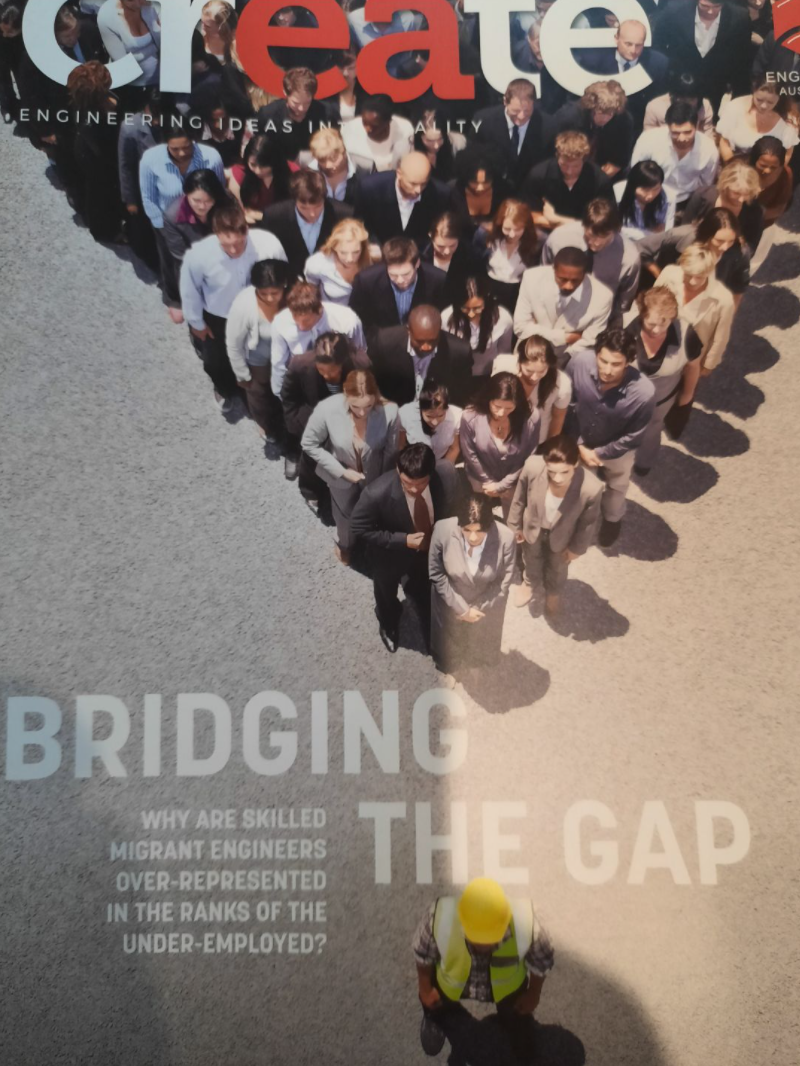
Cover of Engineering Magazine, “Create” in November 2021.
Moreover, migrants work in construction at a substantially lower rate than Australian-born workers:

Therefore, they are directly worsening the housing crisis by pumping demand and not contributing to supply.
In short, Australia needs a much smaller, highly skilled, and highly paid migration system.
Finally, we have the paid shills at the Grattan Institute, funded by the pro-Big Australia lobby, the Scanlon Foundation, gaslighting that lower immigration would destroy Australia’s finances.
Trent Wiltshire, the deputy director of migration and labour markets at the Grattan Institute, told Guardian Australia that, although reducing the permanent skilled intake would not have a big impact in the short term, the longer term benefit of skilled migration was “huge”, including migrants improving Australia’s productivity, filling skills shortages, and paying more taxes.
Earth to Trent: Growing the population faster than business investment, infrastructure investment, and housing supply has caused capital shallowing, dragging down Australia’s productivity:

This is a key reason why Australia’s productivity and per capita GDP growth have been so poor and why everything has become more congested. Meanwhile, skills shortages are worse than ever (see above).
The tax benefits of migration are also illusionary.
The federal government collects 82% of the nation’s tax revenue and derives all of the benefits from immigration via increased personal and company taxes.
However, the Grattan Institute always conveniently ignores that state governments, who are primarily responsible for infrastructure and service delivery, are left picking up the cost of immigration, which has driven them deep into debt:


Residents of our major cities have also been left worse off as housing, infrastructure, and services have failed to keep pace with population growth.
Residents have also suffered from higher cost-of-living as cash-starved state governments privatise existing and new infrastructure, resulting in higher user pay charges.
The lived experience of the past 20 years of high immigration is all the empirical evidence you need to know that the Big Australia policy is a net negative for Australians.
Feel free to fire off below with more examples of gaslighting by Australia’s mainstream media, lobbyists, and paid shill think tanks.
The above is only a sample of the gaslighting on display since Peter Dutton promised to trim migration. There is a lot that I have missed or have not bothered to include.

